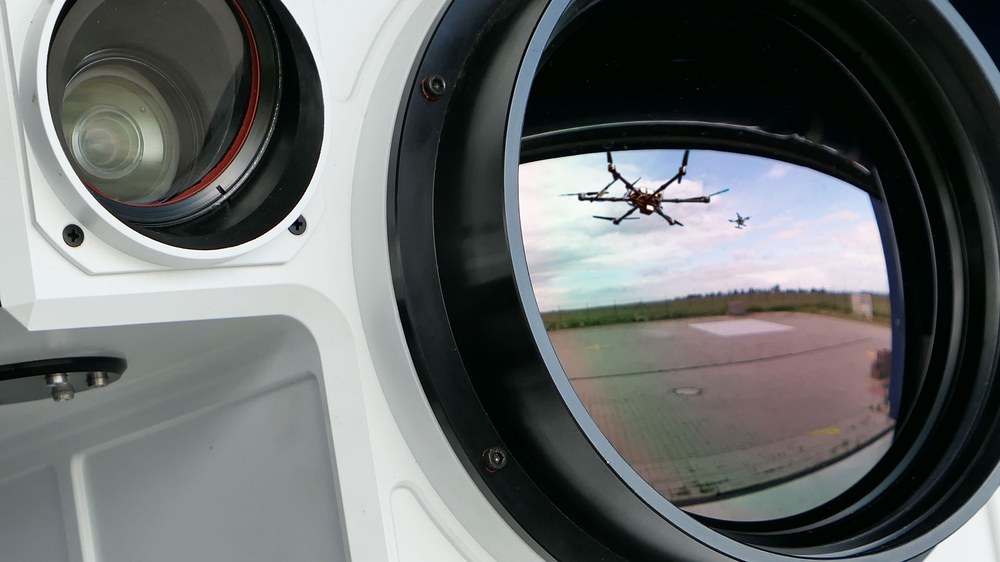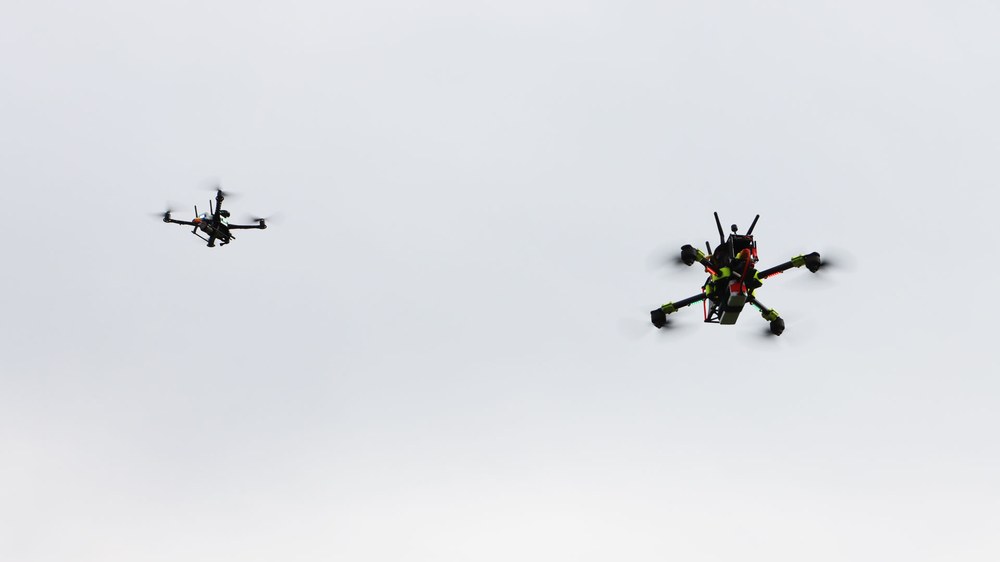Reliable drone defence



- DLR is developing technologies to prevent unwanted drones from continuing their flight.
- Tests are being conducted at the National Experimental Test Center for Unmanned Aircraft Systems in Cochstedt, Germany.
- Led by the DLR Institute of Flight Systems, the CUSTODIAN project brings together expertise from twelve DLR institutes and facilities.
- Focus: Aviation, security, defence, drones
How can drone intruders be rendered harmless? What measures can be taken when drones appear at airports, near critical infrastructure or at major events? The German Aerospace Center (Deutsches Zentrum für Luft- und Raumfahrt; DLR) is researching and developing technologies for drone detection and defence. These include methods for locating and tracking drones to create an overall situational picture, as well as techniques for neutralising rogue aircraft. An interceptor drone may take up pursuit and either crash into the intruder or capture it mid-air, or jamming signals could prevent drones from continuing their flight. DLR has already successfully demonstrated various drone defence measures, expanding the civil and military possibilities for detection and defence.
"The changing security situation in recent months and weeks over Germany and now also in neighbouring countries makes it urgently necessary for us to pool our expertise through knowledge exchange," says Chair of DLR's Executive Board Anke Kaysser-Pyzalla. "To this end, we are in intensive dialogue with public stakeholders, industry and authorities with security responsibilities about using our technologies to protect critical infrastructure and our country. One of our main focuses is our drone competence centre at Magdeburg-Cochstedt Airport, for trialling uncrewed aerial systems and their operational resilience as well as measures for drone defence."
Interceptor drone flies autonomously
Uncrewed aviation is becoming increasingly important and technological advances are opening up new possibilities. Delivery drones, for example, can supply hard-to-reach locations, including crisis-hit areas. Uncrewed aerial vehicles (UAS) can provide situational information after disasters and help emergency services coordinate their efforts. At the same time, drones are becoming increasingly relevant in the field of security technology. It is clear that drones are being used not only for reconnaissance but also to attack.
In the CUSTODIAN (Counter-UAS Technologies for Detection, Interception and Neutralization) project, twelve DLR institutes and facilities are pooling their expertise in counter-drone technologies under the leadership of the DLR Institute of Flight Systems. Researchers at DLR's National Experimental Test Center for Unmanned Aircraft Systems in Cochstedt have successfully demonstrated how a hostile drone can be detected and neutralised. In one scenario, the researchers forced a drone to land by deliberately interfering with its navigation signal. In another scenario, an autonomous interceptor drone neutralised an intruder drone by ramming it. DLR is also investigating additional approaches to render drones harmless.

DLRmagazine 178 / CD Werbeagentur
Step by step towards drone defence
Countering drone intruders involves several stages. The first step is detection, using sensors that identify both individual drones and entire swarms. In the second step, the situation is assessed in a control centre. The third step is to select and initiate the appropriate countermeasures.
Interceptor drones can be used as an effective countermeasure. In its research into interception systems, DLR is investigating the entire chain from detection to interception manoeuvres to recovery. The configuration of such an interceptor drone depends on the scenario, and drones can be specifically supported by measures from the ground. According to the Institute of Flight Systems: "The safety of the environment and the precision of the effect are central considerations. As well as innovation, comprehensive analysis and evaluation are therefore a central goal of these activities".
Related links
The National Experimental Test Center for Unmanned Aircraft Systems – a pioneer and new centre of excellence
With the National Experimental Test Center for Unmanned Aircraft Systems at Magdeburg-Cochstedt Airport, DLR has established a highly innovative centre of excellence for uncrewed aerial systems (UAS) that is unique in Europe. Due to the rapid growth of the drone industry, the number of system tests is also increasing significantly. The test centre was opened in 2021 to enable holistic technology development and serves as a pioneer for research and development of new UAS technologies – both at DLR and for external partners.
